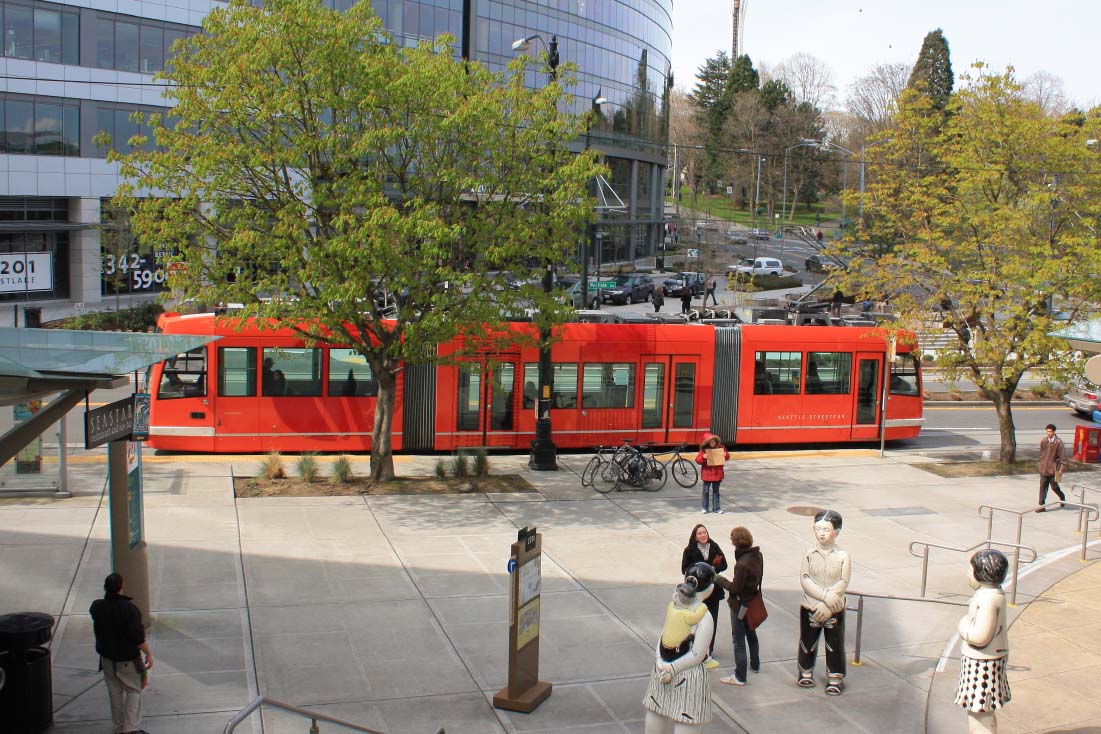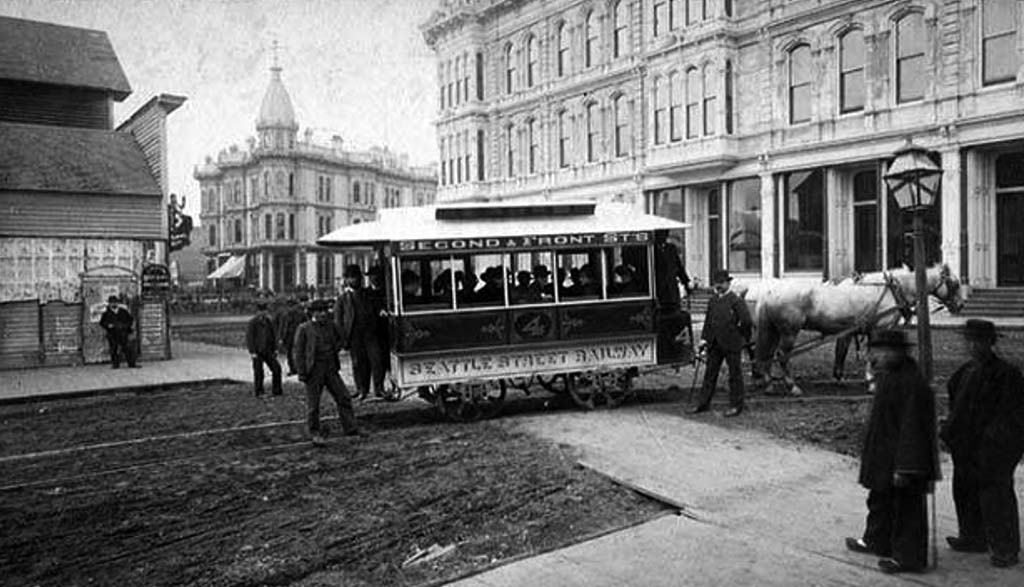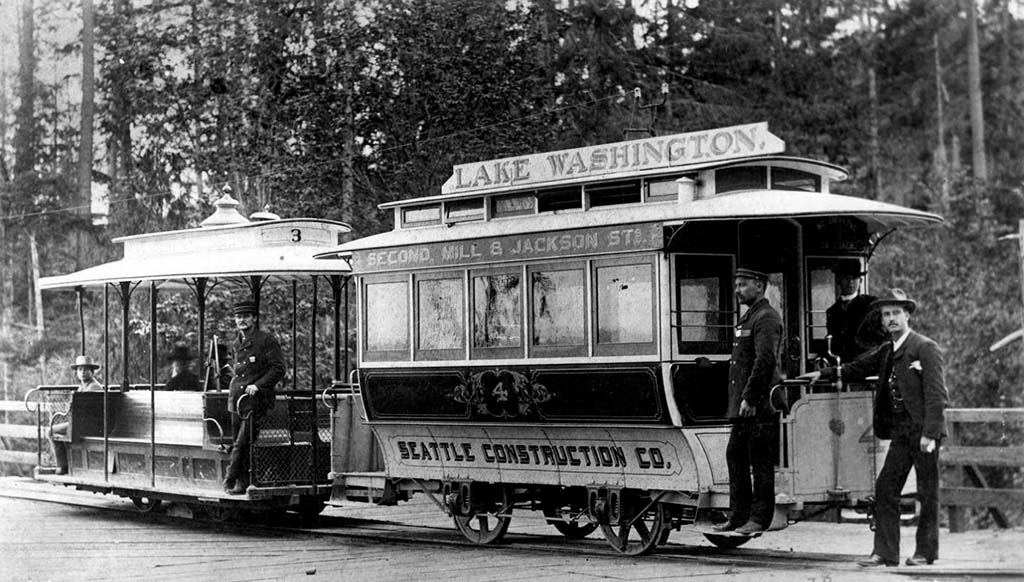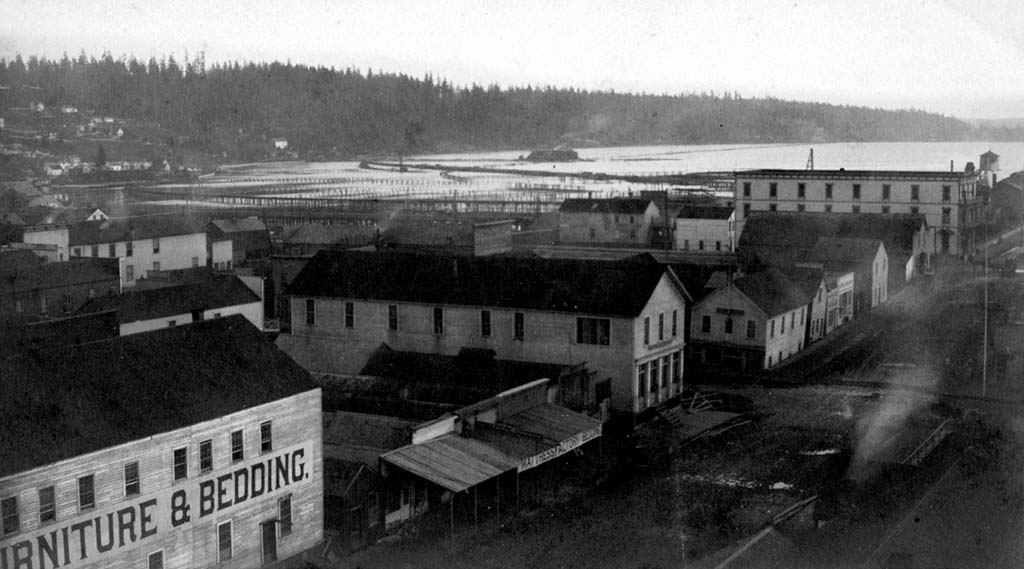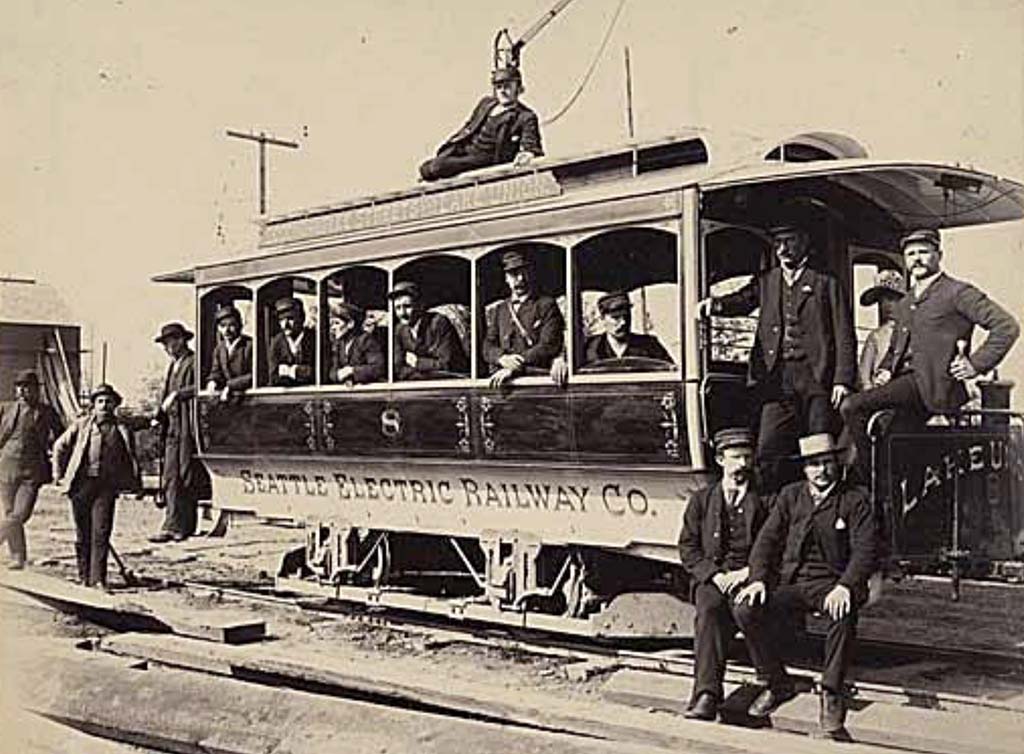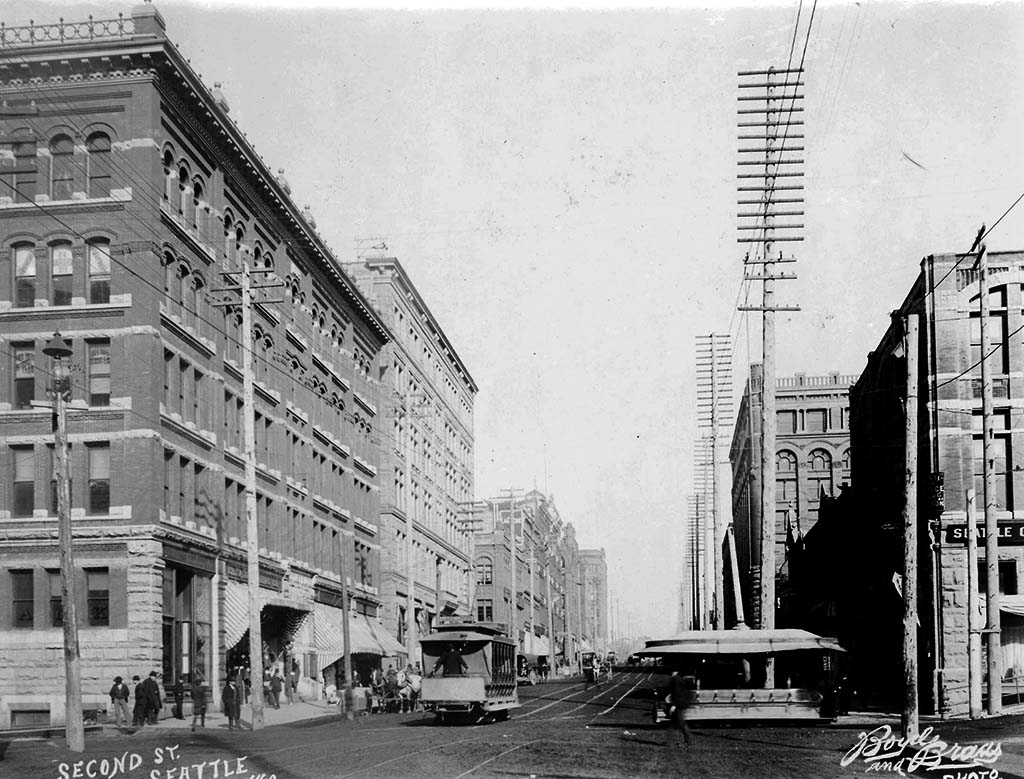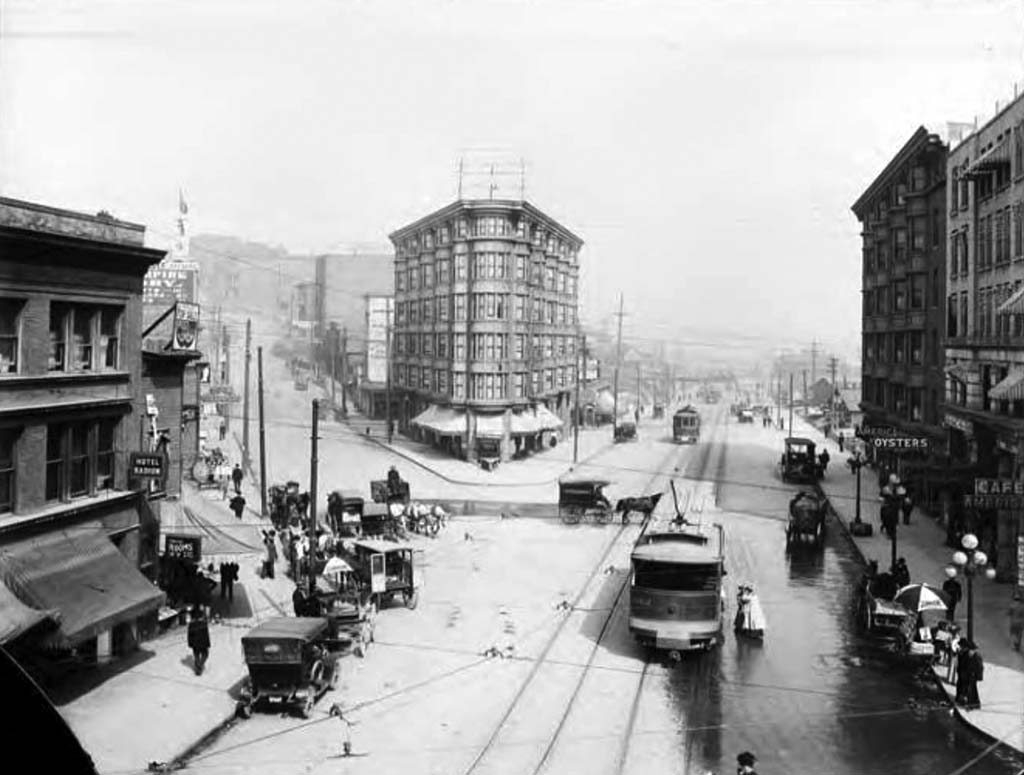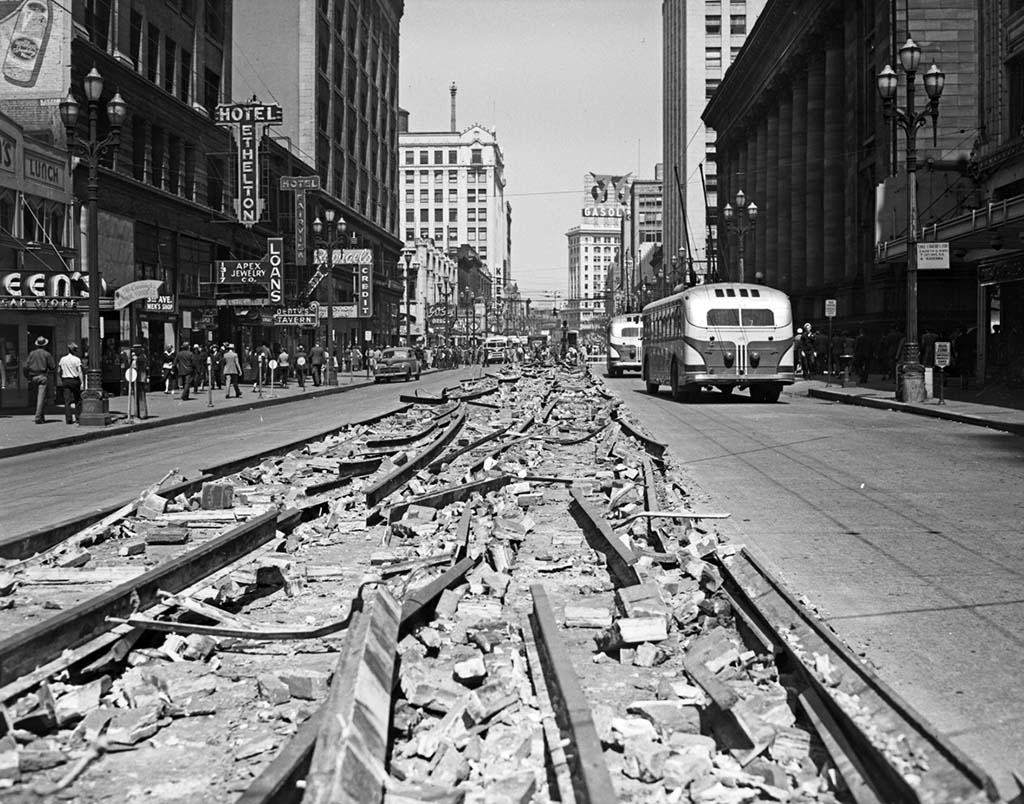-
Westlake roadway and streetcars
Westlake streetcars
Backed by people such as Arthur Denny and Thomas Burke, Frank Osgood opened Seattle’s first streetcar in September 1884. It was horse-powered (hence the nickname hayburners), cost a nickel per ride, and ran along 2nd Avenue. Three years later, the first cable car—which operated like an underground ski lift—began to operate, running from Pioneer Square to Leschi. Then in 1889, Osgood created the first electric streetcar, and the system expanded rapidly to 22 independent lines.
One was operated by Luther Henry Griffith on what was then known as Rollin Street and is now Westlake Avenue. On October 14, 1890, the Seattle City Council had sought to address an ever expanding city by approving a new streetcar line between downtown and south Lake Union. The provisional franchise would be awarded to the first company to establish service on one of the eight authorized routes. Employing 100 men and nine plows, Griffith’s company laid their tracks in five days along the route abandoned by the Seattle Coal & Transportation Company (see Transporting Coal stop for more info). The line later reached Fremont on a trestle built over the water of Lake Union’s west shore.
Initially owned by multiple entities, the streetcar system was consolidated in 1900 by Stone & Webster, a Boston-based firm, which sold it in 1919 to the city of Seattle for $15 million. At the system peak in 1936, it totaled 210 miles of tracks, 410 streetcars, and 26 routes. But it was operating at a loss and the city decided to try a raise money through a bond that would convert the old streetcar trolleys to busses and “trackless trolleys.” Voters rejected it, which prompted the governor to seek federal funding. When it came through, the city implemented a plan slightly revised from the one voters rejected and started the process of ripping out the trolley system. Seattle’s last streetcar trolley made its final run on April 13, 1941.
Walk north one block to Harrison Street.
